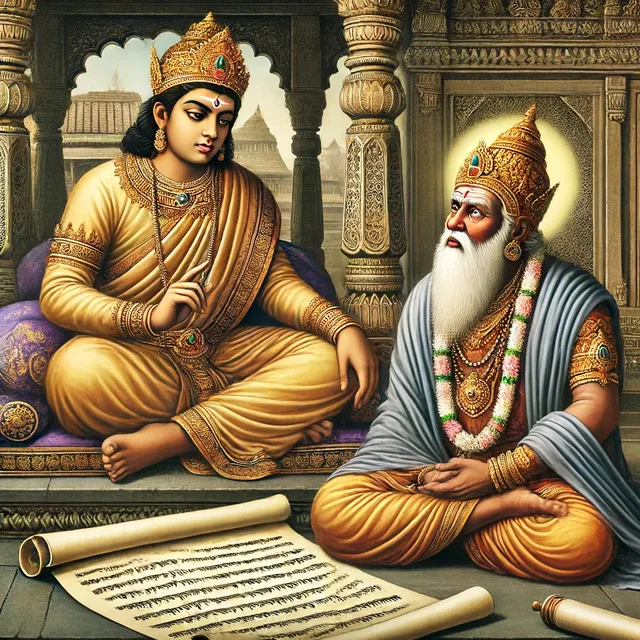Asta Bakra: An Overview
What is Asta Bakra?
Asta Bakra, also known as Ashtavakra Gita or Ashtavakra Samhita, is an ancient Indian scripture that presents the teachings of the sage Ashtavakra to King Janaka. Unlike other spiritual texts, Asta Bakra is a dialogue between a guru (teacher) and a disciple, focusing on the nature of self, reality, and liberation. It is revered in the Advaita Vedanta tradition for its direct and uncompromising approach to non-dualism.
History of Asta Bakra
Origins
The Asta Bakra Gita is believed to have been composed between the 5th and 6th centuries CE, although some scholars suggest it may have originated even earlier. The text is attributed to the sage Ashtavakra, a legendary figure known for his profound wisdom despite his physical deformities (hence the name "Ashtavakra," meaning "eight bends" in Sanskrit).
Sage Ashtavakra
Ashtavakra, the central figure of the text, is known for his extraordinary knowledge and wisdom from a very young age. According to legend, he was born deformed due to a curse but possessed a deep understanding of the Vedas and scriptures. His teachings to King Janaka form the core of the Asta Bakra Gita.
King Janaka
King Janaka, the ruler of Mithila, was not only a king but also a renowned philosopher and seeker of truth. His spiritual quest led him to seek guidance from Ashtavakra, and their conversations are documented in the Asta Bakra Gita.
Teachings of Asta Bakra
The Asta Bakra Gita is divided into 20 chapters, each addressing different aspects of self-realization and liberation. Some of the key teachings include:
Non-Dualism (Advaita)
The text emphasizes the non-dual nature of reality. It teaches that the self (Atman) and the ultimate reality (Brahman) are one and the same. This understanding is central to the philosophy of Advaita Vedanta.
Self-Realization
Asta Bakra advocates for self-realization as the path to liberation (Moksha). It teaches that true knowledge of the self leads to the realization that the individual self is not separate from the universal self.
Detachment
One of the core messages is the importance of detachment from material possessions, desires, and ego. Ashtavakra advises King Janaka to transcend worldly attachments to achieve spiritual freedom.
Inner Peace
The text teaches that inner peace and contentment come from within and are not dependent on external circumstances. It encourages seekers to look inward for true happiness.
Legacy of Asta Bakra
Influence on Advaita Vedanta
The Asta Bakra Gita has had a profound impact on the Advaita Vedanta tradition. Its teachings have been studied, interpreted, and revered by scholars and spiritual seekers for centuries.
Modern Interpretations
In contemporary times, the text continues to be a source of inspiration for those interested in non-dualism and self-realization. Many modern spiritual teachers and philosophers have written commentaries and interpretations of the Asta Bakra Gita, making its wisdom accessible to a wider audience.
Cultural Significance
Beyond its spiritual teachings, the Asta Bakra Gita holds cultural significance in India. It is considered a literary masterpiece and a testament to the rich philosophical heritage of ancient India.
Conclusion
The Asta Bakra Gita remains a timeless guide for those on the path to self-realization and spiritual enlightenment. Its teachings on non-dualism, detachment, and inner peace continue to resonate with seekers around the world, making it a cornerstone of Advaita Vedanta philosophy.

Congratulations, your post has been upvoted by @upex with a 58.28% upvote. We invite you to continue producing quality content and join our Discord community here. Keep up the good work! #upex